1914 French Grand Prix on:
[Wikipedia]
[Google]
[Amazon]
The 1914 French Grand Prix was a 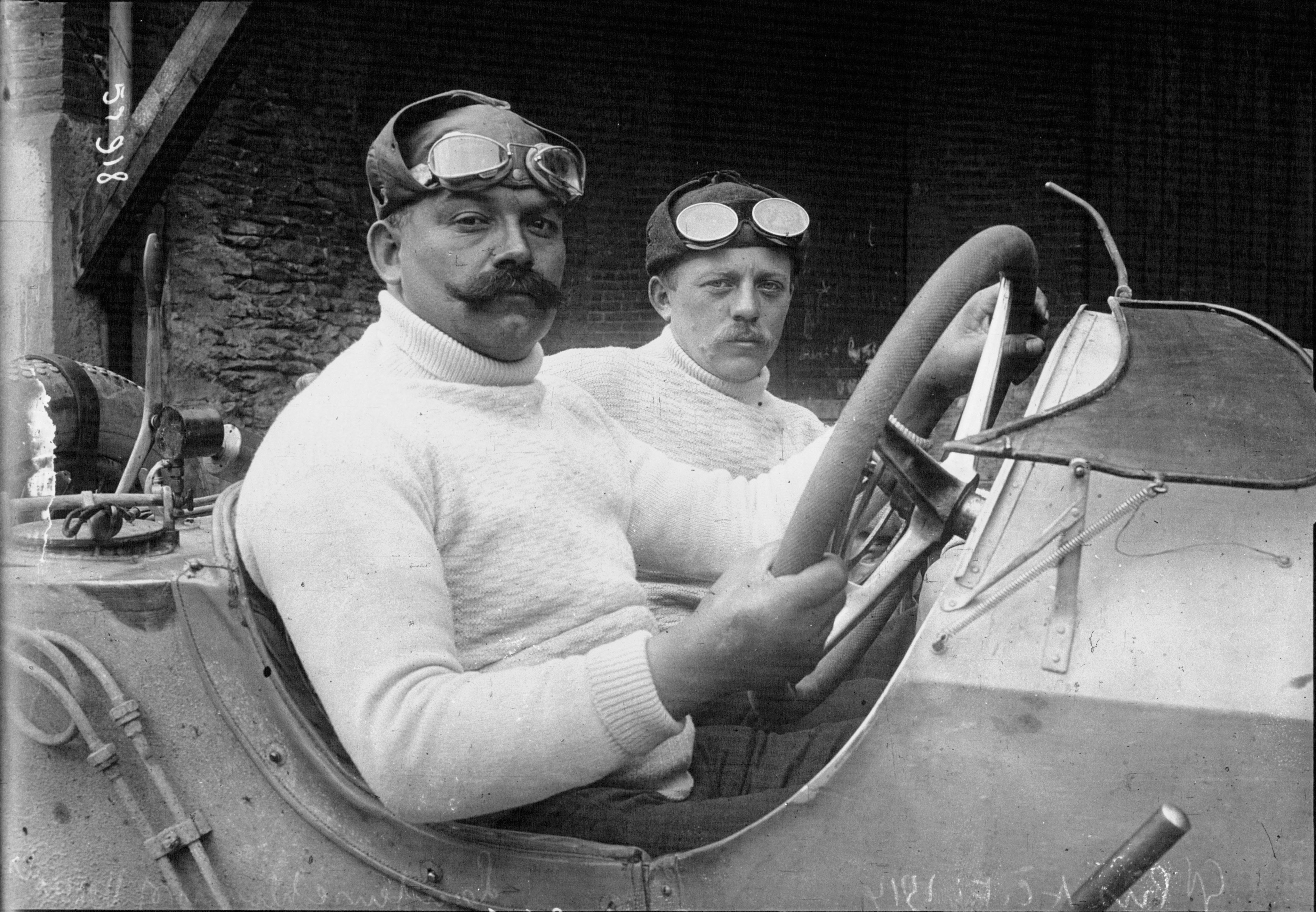

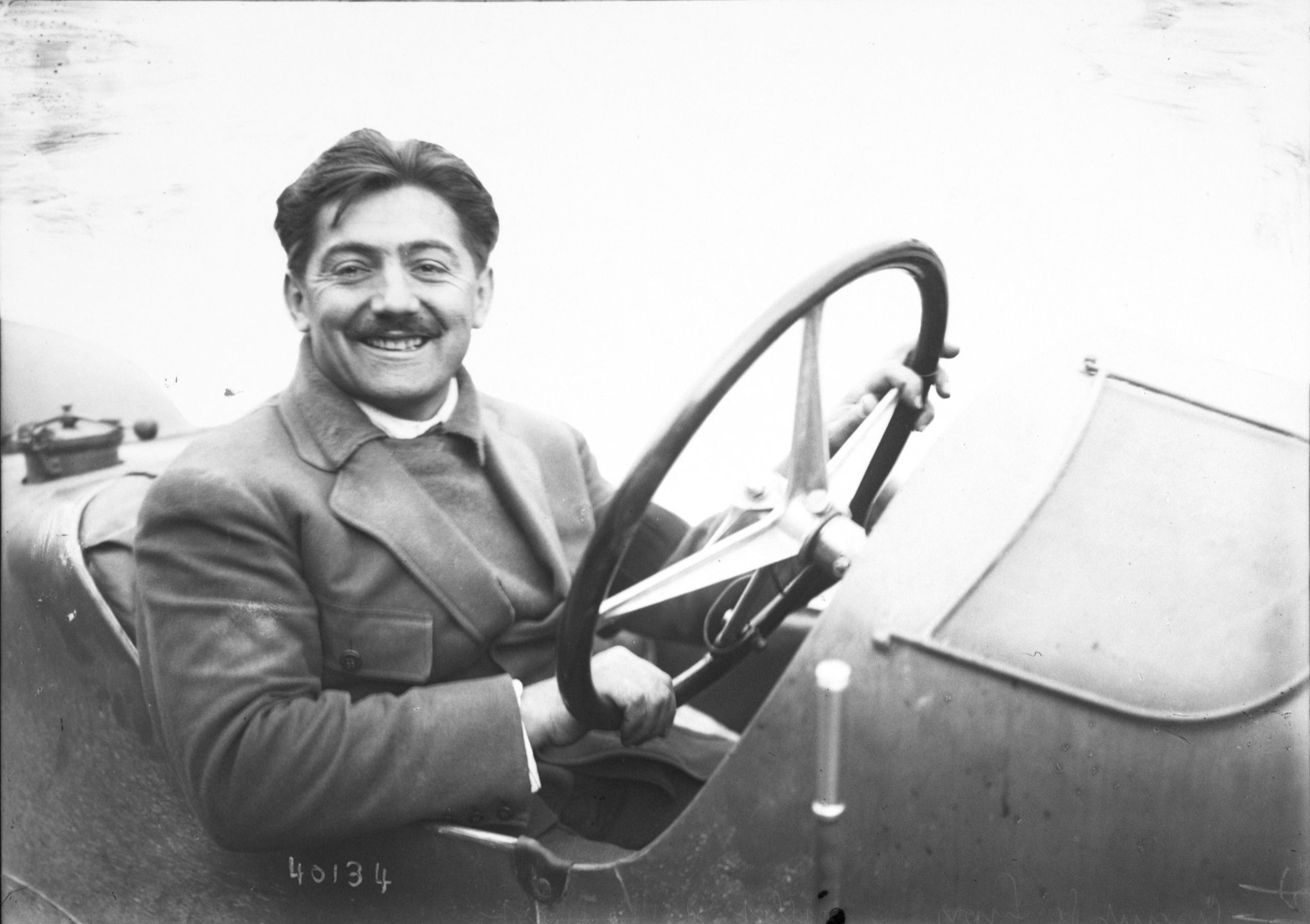
 The city of
The city of
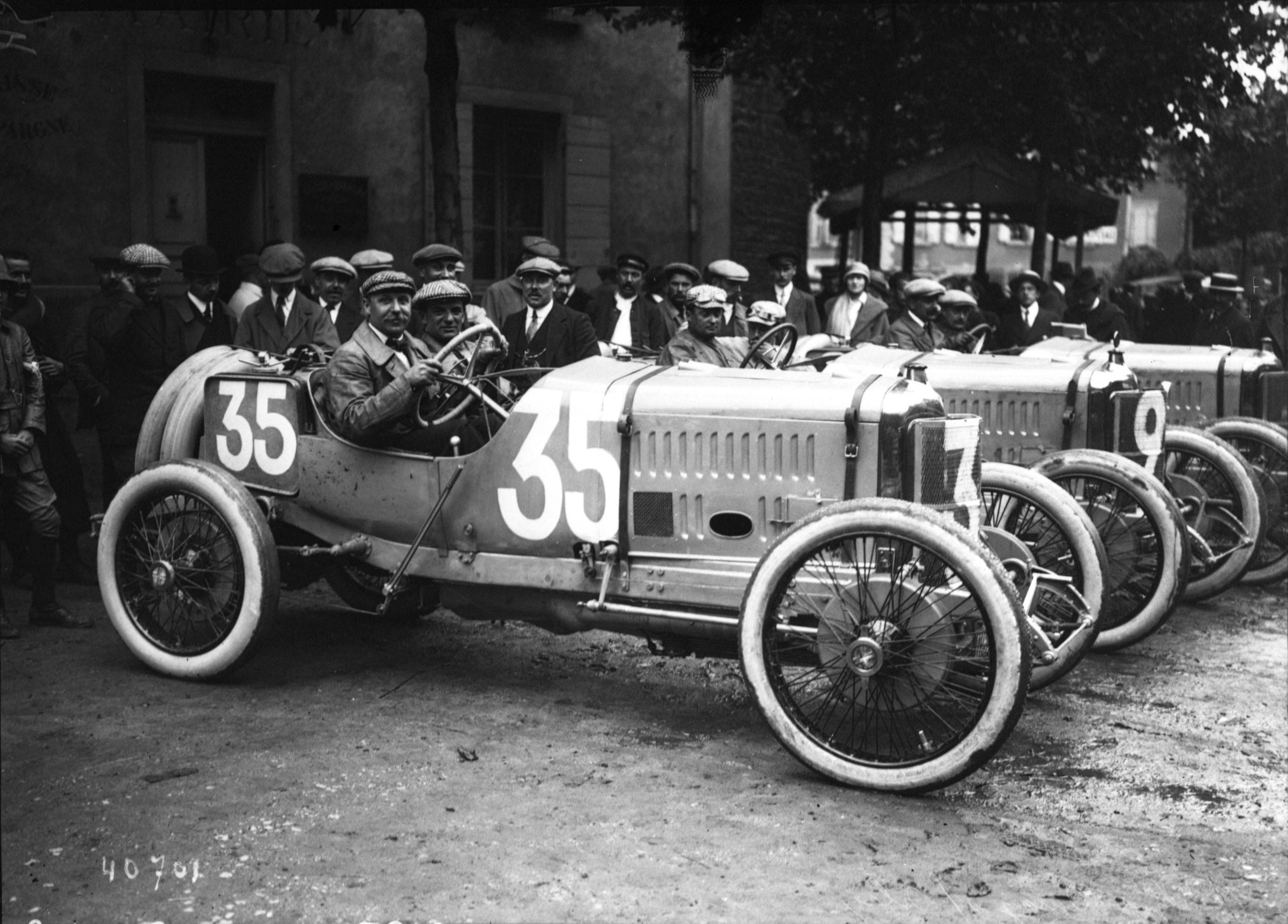
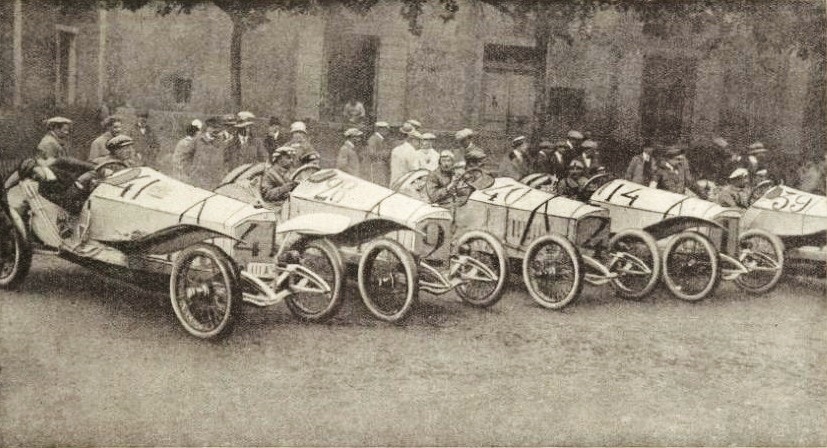 The most serious opposition to the French teams would come from Mercedes, returning to the Grand Prix for the first time since winning in 1908. The company had not made a racing engine before that revved over 1500rpm so
The most serious opposition to the French teams would come from Mercedes, returning to the Grand Prix for the first time since winning in 1908. The company had not made a racing engine before that revved over 1500rpm so
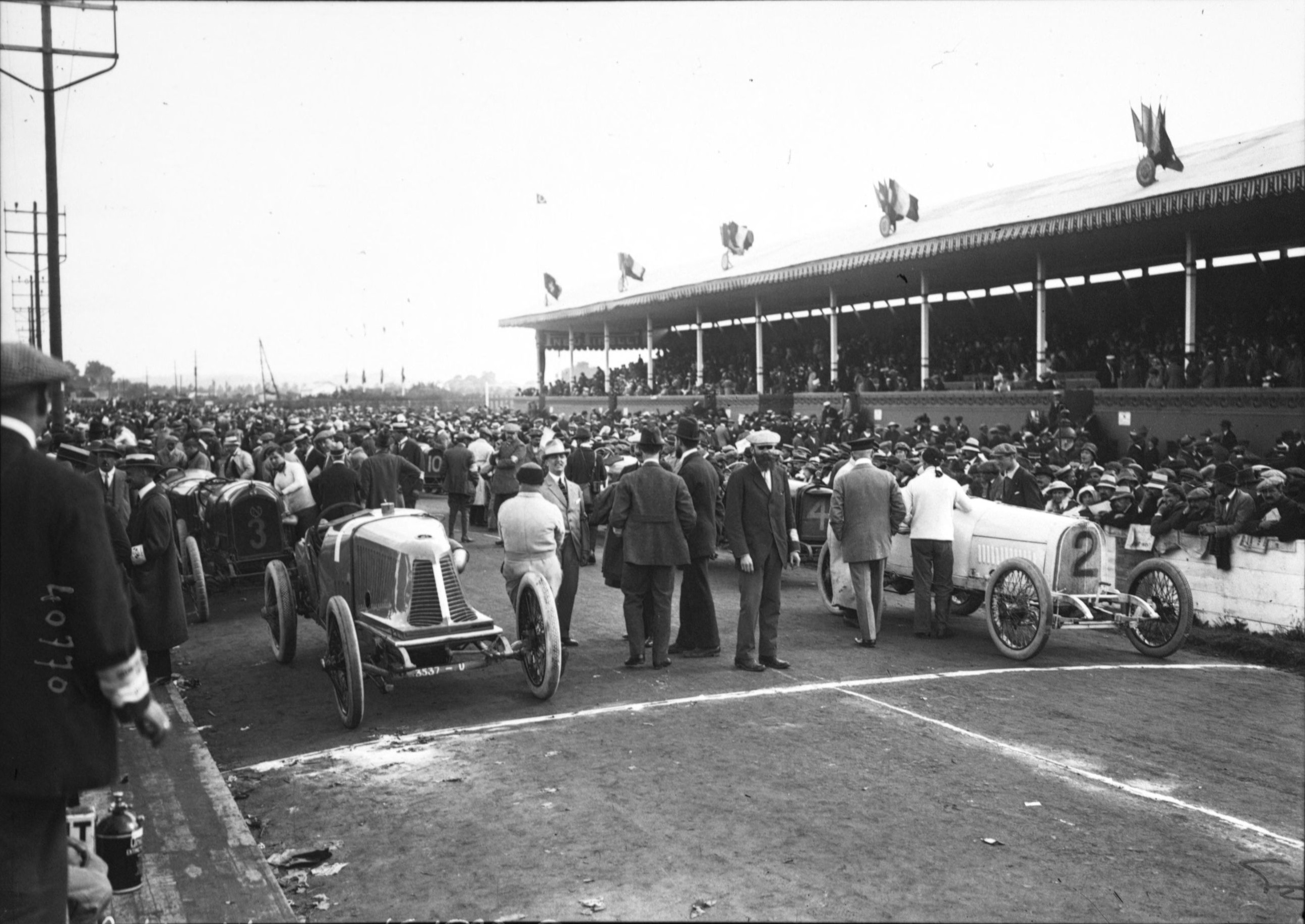
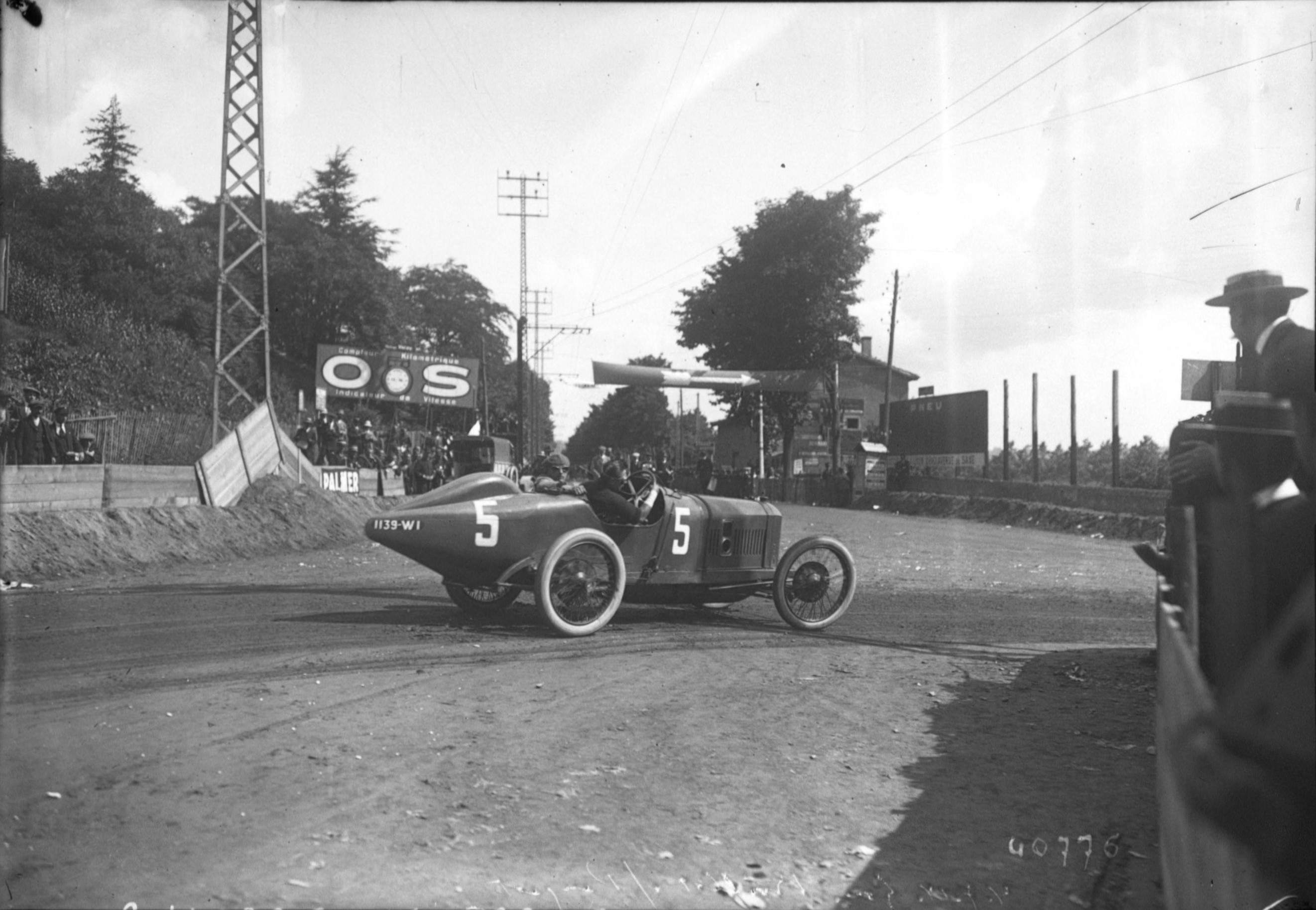
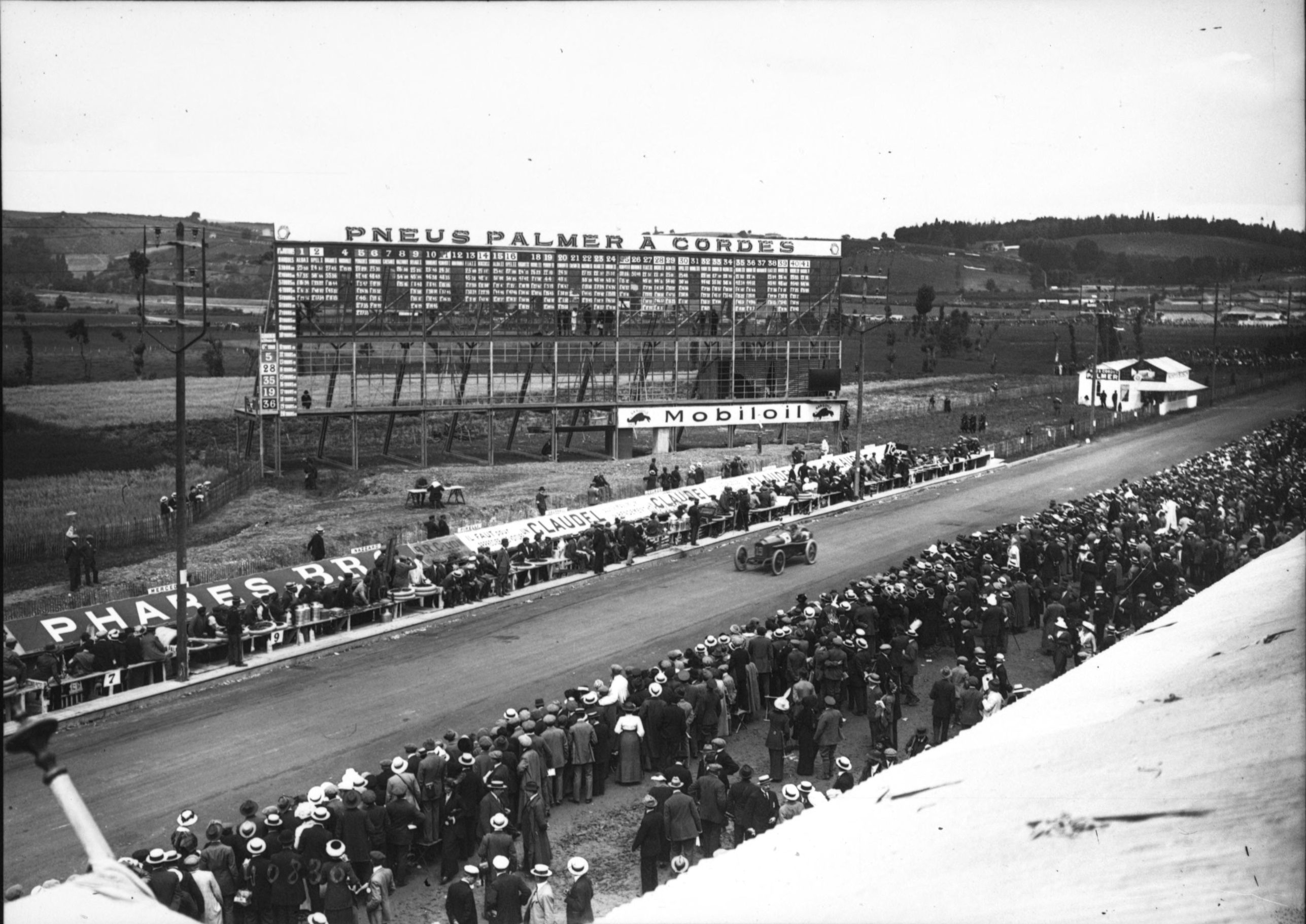 Mercedes knew that meticulous preparation would be needed if they were to beat the French cars. In January, the company had sent its team to France to reconnoitre the track to calculate gearing ratios.Fox 1973, p.20-1 Two cars were ready in April for testing where two changes were noted. The extended tail was cut off to save weight and, from the long straights and winding corners, the engineers recommended changing to a five-speed gearbox. However, there was no time to arrange the latter.
The ACF organised a practice period on the new circuit three weeks before the event. However, because they were public roads all that could be arranged were a couple of 90-minute pre-dawn sessions, which left most teams disgruntled. The Vauxhall cars were not even ready by then.
The Peugeot team was confident that their 4-wheel brakes would allow better cornering and the higher top-end speed from the Peugeot's streamlined rear-end would be decisive.Fox 1973, p.15-6 In contrast, the Mercedes’ lower centre-of-gravity would provide better road-holding to give it an edge over the French cars. They were also running on more durable
Mercedes knew that meticulous preparation would be needed if they were to beat the French cars. In January, the company had sent its team to France to reconnoitre the track to calculate gearing ratios.Fox 1973, p.20-1 Two cars were ready in April for testing where two changes were noted. The extended tail was cut off to save weight and, from the long straights and winding corners, the engineers recommended changing to a five-speed gearbox. However, there was no time to arrange the latter.
The ACF organised a practice period on the new circuit three weeks before the event. However, because they were public roads all that could be arranged were a couple of 90-minute pre-dawn sessions, which left most teams disgruntled. The Vauxhall cars were not even ready by then.
The Peugeot team was confident that their 4-wheel brakes would allow better cornering and the higher top-end speed from the Peugeot's streamlined rear-end would be decisive.Fox 1973, p.15-6 In contrast, the Mercedes’ lower centre-of-gravity would provide better road-holding to give it an edge over the French cars. They were also running on more durable
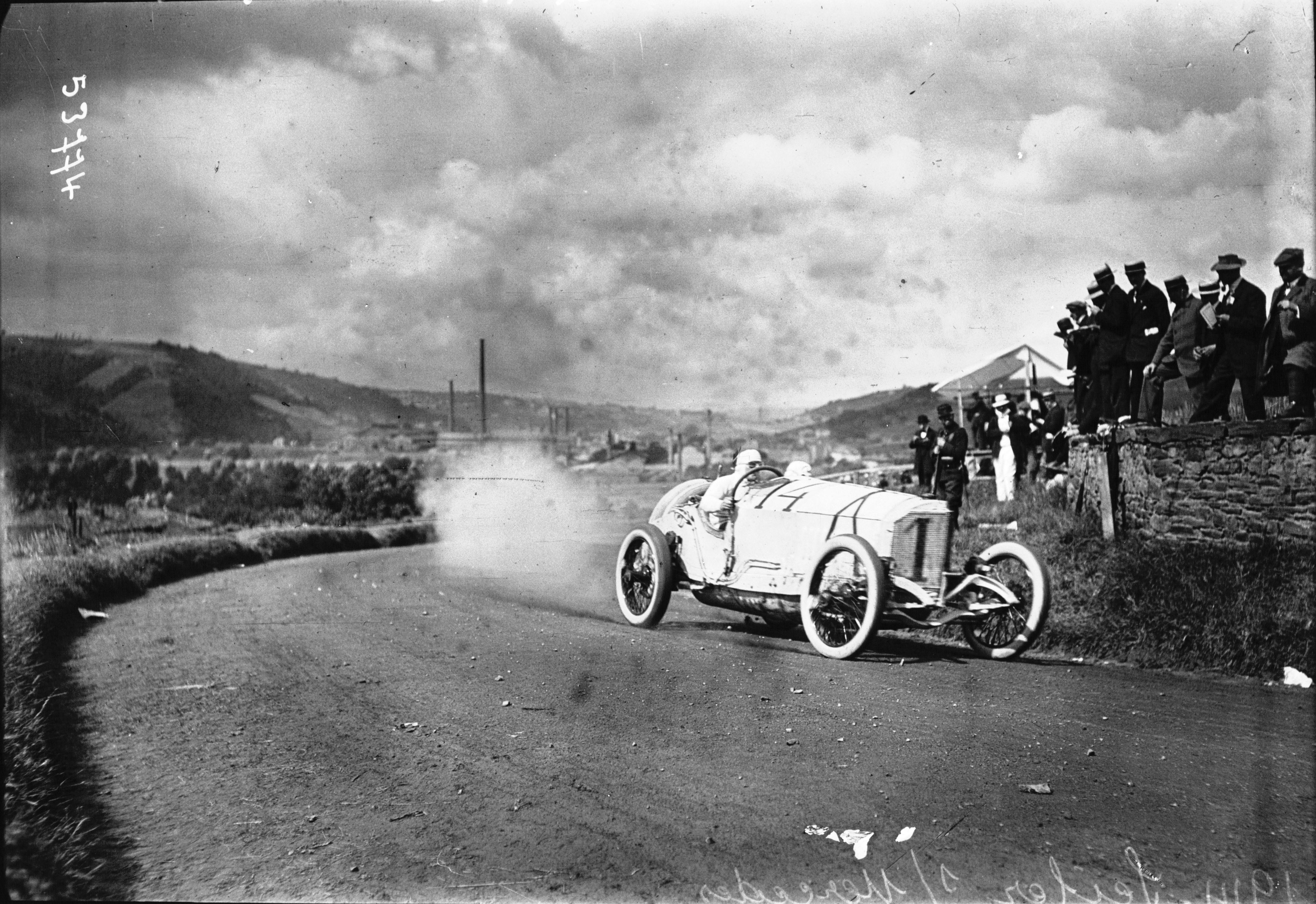
 When Boillot had to pit unexpectedly after an hour, on the third lap, it allowed Sailer to take the lead on the road. Pilette's Mercedes retired at the same time, the gearbox damage in practice proving terminal. Sailer pressed on setting the fastest lap of the race on lap four and extending his lead over Boillot to almost three minutes. Whether it was racing inexperience, or internal rivalry with team-leader Lautenschlager to prove a point, Sailer had pushed his car too hard and stopped with a broken conrod along the Gier River on the sixth lap.Fox 1973, p.24-5 (Sailer and no one else at Mercedes had said there was a deliberate plan to use a “hare” to break the Peugeots.)
After seven laps Boillot had the lead over Lautenschlager, while Goux had just overtaken Duray's Delage to move into third. On the tenth lap at the halfway point, Wagner, Salzer, and Resta's Sunbeam, had also overtaken the Delage. Boillot led by a minute and the German team started coming in for their scheduled stops. Lautenschlager was running out of brakes and his stop became a bit of a shambles as the normally well-drilled Mercedes team cost him 2–3 minutes in the pits. But the Peugeot Dunlops were wearing far quicker – Boillot had to make six pitstops for tyre changes to the single ones for the Mercedes cars.
When Boillot had to pit unexpectedly after an hour, on the third lap, it allowed Sailer to take the lead on the road. Pilette's Mercedes retired at the same time, the gearbox damage in practice proving terminal. Sailer pressed on setting the fastest lap of the race on lap four and extending his lead over Boillot to almost three minutes. Whether it was racing inexperience, or internal rivalry with team-leader Lautenschlager to prove a point, Sailer had pushed his car too hard and stopped with a broken conrod along the Gier River on the sixth lap.Fox 1973, p.24-5 (Sailer and no one else at Mercedes had said there was a deliberate plan to use a “hare” to break the Peugeots.)
After seven laps Boillot had the lead over Lautenschlager, while Goux had just overtaken Duray's Delage to move into third. On the tenth lap at the halfway point, Wagner, Salzer, and Resta's Sunbeam, had also overtaken the Delage. Boillot led by a minute and the German team started coming in for their scheduled stops. Lautenschlager was running out of brakes and his stop became a bit of a shambles as the normally well-drilled Mercedes team cost him 2–3 minutes in the pits. But the Peugeot Dunlops were wearing far quicker – Boillot had to make six pitstops for tyre changes to the single ones for the Mercedes cars.


 But despite that, Boillot's skill and all-or-nothing driving kept him with a 2-3 minute lead. By the 11th lap with the pitstops done, Wagner had passed Goux and Lautenschlager to move into second. Then a dangerous accident happened. Szisz had pulled over on the roadside to change a wheel, when he was struck by Breckheimer's Opel when it was obscured by the dust. His arm broken, it fell to his less injured mechanic to slowly get the car back to the pits where Szisz could get attention.
The Peugeots’ stops lost their advantage and the Mercedes’ pursuit was relentless. Although Wagner had to pit on lap 15 to replace tyres, Salzer overtook Goux to move up to fourth. When Boillot then had to pit for tyres on the 17th lap Lautenschlager reduced the lead from 2 minutes to just 14 seconds. He overtook the Peugeot as they approached Givors. Boillot's car had been thrashed to its limits and was now falling apart, down to three cylinders. By the end of the 18th lap he was 30 seconds behind. Boillot kept pushing regardless but on the last lap his engine finally expired when he over-revved it on the climb out of the Gier valley. Boillot was distraught, hunched over the steering wheel weeping at his failure.
So after seven hours of racing, Mercedes took a crushing 1-2-3 victory with Lautenschlager repeating his 1908 win ahead of Wagner and Salzer. The French crowd was silent, with Goux's fourth place nearly ten minutes back ahead of Resta's Sunbeam being scant consolation.
But despite that, Boillot's skill and all-or-nothing driving kept him with a 2-3 minute lead. By the 11th lap with the pitstops done, Wagner had passed Goux and Lautenschlager to move into second. Then a dangerous accident happened. Szisz had pulled over on the roadside to change a wheel, when he was struck by Breckheimer's Opel when it was obscured by the dust. His arm broken, it fell to his less injured mechanic to slowly get the car back to the pits where Szisz could get attention.
The Peugeots’ stops lost their advantage and the Mercedes’ pursuit was relentless. Although Wagner had to pit on lap 15 to replace tyres, Salzer overtook Goux to move up to fourth. When Boillot then had to pit for tyres on the 17th lap Lautenschlager reduced the lead from 2 minutes to just 14 seconds. He overtook the Peugeot as they approached Givors. Boillot's car had been thrashed to its limits and was now falling apart, down to three cylinders. By the end of the 18th lap he was 30 seconds behind. Boillot kept pushing regardless but on the last lap his engine finally expired when he over-revved it on the climb out of the Gier valley. Boillot was distraught, hunched over the steering wheel weeping at his failure.
So after seven hours of racing, Mercedes took a crushing 1-2-3 victory with Lautenschlager repeating his 1908 win ahead of Wagner and Salzer. The French crowd was silent, with Goux's fourth place nearly ten minutes back ahead of Resta's Sunbeam being scant consolation.
''Grand Prix Winners 1895–1949 : Part 1 (1895–1916) ''
nbsp;– list of the races and winners. Retrieved 28 Aug 2019
nbsp;– Hans Etzrodt's description of the annual regulations, and changes. Retrieved 7 Jun 2019
nbsp; - Darren Galpan's list of the races, entrants and results. Retrieved 6 Sep 2019
nbsp; - Leif Snellman's article of the race “Remember it for the one who lost”. Retrieved 16 Sep 2019 {{Grand Prix race report , Name_of_race =
Grand Prix
Grand Prix ( , meaning ''Grand Prize''; plural Grands Prix), is a name sometimes used for competitions or sport events, alluding to the winner receiving a prize, trophy or honour
Grand Prix or grand prix may refer to:
Arts and entertainment ...
motor race
Motorsport, motorsports or motor sport is a global term used to encompass the group of competitive sporting events which primarily involve the use of motorized vehicles. The terminology can also be used to describe forms of competition of two ...
held at Lyon
Lyon,, ; Occitan: ''Lion'', hist. ''Lionés'' also spelled in English as Lyons, is the third-largest city and second-largest metropolitan area of France. It is located at the confluence of the rivers Rhône and Saône, to the northwest of t ...
on 4 July 1914. Hailed as one of the greatest races of the twentieth century,Georgano 1971, p.87 it was a contest between the French Peugeot
Peugeot (, , ) is a French brand of automobiles owned by Stellantis.
The family business that preceded the current Peugeot companies was founded in 1810, with a steel foundry that soon started making hand tools and kitchen equipment, and the ...
s and the German Mercedes. For the first time, the Grand Prix was run to an engine limitation – of 4.5L maximum capacity. It was won by the Mercedes of Christian Lautenschlager
Christian Friedrich Lautenschlager (April 13, 1877 – January 3, 1954) was a German Grand Prix motor racing champion.
Biography
Born in the village of Magstadt, Baden-Württemberg, Germany near Stuttgart, Christian Lautenschlager was 14 years ol ...
who won at an average speed of after a tense seven-hour contest with the Peugeot of Georges Boillot
Georges Louis Frederic Boillot (August 3, 1884 – May 19, 1916) was a French Grand Prix motor racing driver and World War I fighter pilot.
Biography
Born in Valentigney, Doubs, Boillot was a mechanic by training who began automobile racing in ...
.



Regulations and Circuit
For several years, the ''Automobile Club de France'' (ACF) had been trying to reduce engine sizes in racing which it saw as increasingly dangerous with their higher speeds. This year, for the first time, it mandated a maximum engine size of 4.5-litresRendall 1993, p.72-3Higham 1995, p.194-6 along with an allowable weight range of (excluding fluids and tools). This obviously benefited the leading French racing manufacturers of Peugeot and Delage, that had dominated the recent years of ''voiturette'' racing along with Sunbeam, at the expense of the big-engined cars of Italy and Germany.Ludvigsen 2009, p.32-3 There was also an entry limit of five cars per manufacturer, and no privateer entries were permitted. The city of
The city of Lyon
Lyon,, ; Occitan: ''Lion'', hist. ''Lionés'' also spelled in English as Lyons, is the third-largest city and second-largest metropolitan area of France. It is located at the confluence of the rivers Rhône and Saône, to the northwest of t ...
promised large subsidies to host and the race was held on a 37.6 km road circuit to the south of the city. It ran from Les Ronzières to the town of Givors
Givors (; frp, Givôrs) is a commune in the Metropolis of Lyon in Auvergne-Rhône-Alpes region in eastern France.
Location
It lies at the confluence of the Rhone and the Gier about south of Lyon and on the main road between that city and Sain ...
. It then took the Route Nationale 88 winding along beside the Gier (a tributary of the Rhône
The Rhône ( , ; wae, Rotten ; frp, Rôno ; oc, Ròse ) is a major river in France and Switzerland, rising in the Alps and flowing west and south through Lake Geneva and southeastern France before discharging into the Mediterranean Sea. At Ar ...
) to Châteauneuf. It returned on a long, undulating straight before coming to a steep downhill right-left switchback (nicknamed ''le piege de la mort'' – the Death trap) and a hairpin at Les Sept Chemins to complete the lap.Cimarosti 1997, p.48Fox 1973, p.15-6 At the end of June the two hairpin turns were concreted and the course was re-laid with granite chips to prevent its break-up and coated with calcium chloride to reduce the dust raised. The Grand Prix was to be twenty laps of the circuit, totalling 752.6 km.
Entries
On 28 June, the Archduke Franz Ferdinand, heir to the Austro-Hungarian empire was assassinated inSarajevo
Sarajevo ( ; cyrl, Сарајево, ; ''see Names of European cities in different languages (Q–T)#S, names in other languages'') is the Capital city, capital and largest city of Bosnia and Herzegovina, with a population of 275,524 in its a ...
. A week later, the French Grand Prix was held under an increasingly tense political situation across Europe.
The race attracted one of the highest-quality fields hitherto assembled, of 37 starters from 13 manufacturers and 6 countries. Peugeot were the strong favourites to repeat their victories in 1912 and 1913. They arrived with the new EX-5 (or ‘L-45’, after its engine size) for team drivers Georges Boillot
Georges Louis Frederic Boillot (August 3, 1884 – May 19, 1916) was a French Grand Prix motor racing driver and World War I fighter pilot.
Biography
Born in Valentigney, Doubs, Boillot was a mechanic by training who began automobile racing in ...
, Jules Goux
Jules Goux (6 April 1885 - 6 March 1965) was a French racing driver and Grand Prix motor racing champion. He was also notable for being the first Frenchman, and the first European driver, to win the Indianapolis 500.
Biography
Influenced by the G ...
and Victor Rigal
Victor Rigal (22 September 1879 – June 1941) was a French racing driver.
Biography
He began his career in motorsport at the Critérium des Coeurs in 1898, on a tricycle made by De Dion-Bouton. He won the Levassor Prize for Motorcycles in 190 ...
. The 4.5-litre four-cylinder engine had a twin-overhead cam and generated 112 bhp. Now fitted with four-wheel brakes it also sported a streamlined extended tail.Rendall 1993, p.74-5 Boillot had tested it at Brooklands
Brooklands was a motor racing circuit and aerodrome built near Weybridge in Surrey, England, United Kingdom. It opened in 1907 and was the world's first purpose-built 'banked' motor racing circuit as well as one of Britain's first airfields, ...
and found it lifted the top speed by 8%. The tail also accommodated two spare tyres.Cimarosti 1997, p.49-50

Louis Delâge
Louis Delâge (22 March 1874 – 14 December 1947) was a French pioneer automotive engineer and manufacturer.
Born Pierre Louis Delâge to a family of modest means in Cognac. As an infant he lost the sight in one eye. At the age of 16 he went ...
bought the new 5-speed Type S for Albert Guyot
Albert Guyot (25 December 1881 in Orléans – 24 May 1947 in Neuilly-sur-Seine) was a French racecar driver. He was one of four drivers who entered with Duesenberg the 1921 French Grand Prix
The 1921 French Grand Prix (formally the XV Gran ...
, Arthur Duray
Arthur Duray (9 February 1882 – 11 February 1954) was born in New York City of Belgian parents and later became a French citizen. An early aviator, he held Belgian license #3. He is probably best known today for breaking the land speed record on ...
and Paul Bablot
Paul Bablot (20 November 1873 Boulogne-sur-Seine – 23 December 1932 Marseille) was a French racecar driver. He also owned an early French-built Wright-model airplane.
He later became a track builder and designed the Circuit of Miramas whi ...
.Fox 1973, p.19 Like the Peugeots and FIATs, it was sporting four-wheel brakes.Rendall 1993, p.74-5
New French company Alva convinced Ferenc Szisz
Ferenc Szisz (September 20, 1873 – February 21, 1944), was a Hungarian race car driver and the winner of the first Grand Prix motor racing event on a Renault Grand Prix 90CV on 26 June, 1906.
Early life
Szisz was born in the small town of Szeg ...
, winner of the inaugural Grand Prix in 1906, out of retirement to lead their team.
 The most serious opposition to the French teams would come from Mercedes, returning to the Grand Prix for the first time since winning in 1908. The company had not made a racing engine before that revved over 1500rpm so
The most serious opposition to the French teams would come from Mercedes, returning to the Grand Prix for the first time since winning in 1908. The company had not made a racing engine before that revved over 1500rpm so Paul Daimler
Paul Daimler (13 September 1869 – 15 December 1945) was a German mechanical engineer who designed automobiles. He was the eldest child of Gottlieb Daimler who founded Daimler-Motoren-Gesellschaft and (with Wilhelm Maybach) invented the pet ...
engaged the aero-engine division to assist with engine development. The new 4.5-litre unit had innovative single-cast cylinders with four valves each and a single overhead camshaft, giving 106 bhp at 3100rpm. Gone was the chain-drive, instead a lighter live rear-axle was used. However, they did persist with rear brakes only.
Five of the six 18/100 cars built were entered, with a strong team of drivers led by Christian Lautenschlager
Christian Friedrich Lautenschlager (April 13, 1877 – January 3, 1954) was a German Grand Prix motor racing champion.
Biography
Born in the village of Magstadt, Baden-Württemberg, Germany near Stuttgart, Christian Lautenschlager was 14 years ol ...
, victor in 1908. Alongside him were Otto Salzer, young Mercedes director Max Sailer
Max Sailer (20 December 1882 – 5 February 1964) was a German racecar driver.
Sailer was born in Esslingen. Prior to World War II
World War II or the Second World War, often abbreviated as WWII or WW2, was a world war that l ...
,Legate 2006, p.11 French veteran Louis Wagner and Belgian Mercedes-agent Théodore Pilette.
The new Opel
Opel Automobile GmbH (), usually shortened to Opel, is a German automobile manufacturer which has been a subsidiary of Stellantis since 16 January 2021. It was owned by the American automaker General Motors from 1929 until 2017 and the PSA Grou ...
was a development of the 4.0-litre 1913 model, retaining its single-overhead camshaft, with four valves per cylinder and a live rear axle like the Mercedes. They were the lightest cars in the field, well over 100 kg lighter than most others. Regular works driver Carl Jörns led a team of three cars.
From Italy came FIAT (including veteran Alessandro Cagno
Alessandro Umberto Cagno, Umberto Cagno, nicknamed ''Sandrin'' (2 May 1883 – 23 December 1971) was an Italian racing driver, aviation pioneer and powerboat racer.
Apprenticed at 13 to a Turin engineering factory he was later recruited by Giovan ...
), Felice Nazzaro's own team Automobili Nazzaro
Automobili Nazzaro was an Italian manufacturer of automobiles from 1911 to 1916, and 1919–1923. Founded by racing driver Felice Nazzaro it produced circa 490 vehicles in total and won both the 1913 and 1920 Targa Florios in Sicily.''The Comple ...
, and a single entry from Aquila Italiana
The Aquila Italiana founded as the "Società Anonima Aquila" and quickly renamed as "Società Anonima Italiana Aquila" was an Italian automobile manufacturer from 1906 to 1917. The company was named again in 1909 after it was bought by bank as
"A ...
. Great Britain was represented by Sunbeam (Resta, Lee Guinness and Chassagne) and Vauxhall
Vauxhall ( ) is a district in South West London, part of the London Borough of Lambeth, England. Vauxhall was part of Surrey until 1889 when the County of London was created. Named after a medieval manor, "Fox Hall", it became well known for ...
who included American Ralph DePalma
Raffaele "Ralph" De Palma (December 19, 1882 – March 31, 1956) was an Italian-American racecar driving champion who won the 1915 Indianapolis 500. His entry at the International Motorsports Hall of Fame estimates that he won about 2,0 ...
in their squad.
Practice


 Mercedes knew that meticulous preparation would be needed if they were to beat the French cars. In January, the company had sent its team to France to reconnoitre the track to calculate gearing ratios.Fox 1973, p.20-1 Two cars were ready in April for testing where two changes were noted. The extended tail was cut off to save weight and, from the long straights and winding corners, the engineers recommended changing to a five-speed gearbox. However, there was no time to arrange the latter.
The ACF organised a practice period on the new circuit three weeks before the event. However, because they were public roads all that could be arranged were a couple of 90-minute pre-dawn sessions, which left most teams disgruntled. The Vauxhall cars were not even ready by then.
The Peugeot team was confident that their 4-wheel brakes would allow better cornering and the higher top-end speed from the Peugeot's streamlined rear-end would be decisive.Fox 1973, p.15-6 In contrast, the Mercedes’ lower centre-of-gravity would provide better road-holding to give it an edge over the French cars. They were also running on more durable
Mercedes knew that meticulous preparation would be needed if they were to beat the French cars. In January, the company had sent its team to France to reconnoitre the track to calculate gearing ratios.Fox 1973, p.20-1 Two cars were ready in April for testing where two changes were noted. The extended tail was cut off to save weight and, from the long straights and winding corners, the engineers recommended changing to a five-speed gearbox. However, there was no time to arrange the latter.
The ACF organised a practice period on the new circuit three weeks before the event. However, because they were public roads all that could be arranged were a couple of 90-minute pre-dawn sessions, which left most teams disgruntled. The Vauxhall cars were not even ready by then.
The Peugeot team was confident that their 4-wheel brakes would allow better cornering and the higher top-end speed from the Peugeot's streamlined rear-end would be decisive.Fox 1973, p.15-6 In contrast, the Mercedes’ lower centre-of-gravity would provide better road-holding to give it an edge over the French cars. They were also running on more durable Continental
Continental may refer to:
Places
* Continent, the major landmasses of Earth
* Continental, Arizona, a small community in Pima County, Arizona, US
* Continental, Ohio, a small town in Putnam County, US
Arts and entertainment
* ''Continental'' (al ...
tyres. While the French cars were on Dunlops. Thus, the Mercedes team calculated they would only need to make a single tyre-stop for each car during the race.
During practice though the Peugeot drivers found their cars handled badly, with the poor weight distribution having the spare tyres stowed in the tail.
The only disruption for Mercedes was when Pilette missed a gear-change and over-revved his engine badly.
The Race
Race-day was hot and fine, and about 300,000 spectators lined the roads. So many were coming out on the trains from the city that many missed the 8am start. For the first time, cars were flagged off in pairs at 30-second intervals, in numerical order. First away were Szisz and Jörns,Venables 2009, p.34 but Boillot was the first to arrive back at the finish-line. However, Sailer was ahead on elapsed-time with an 18-second lead and from the beginning he forced the pace, drawing Boillot into a speed-contest. Jörns had to stop on the first lap for radiator repairs, dropping his Opel out of the reckoning.Ludvigsen 2009, p.34
 When Boillot had to pit unexpectedly after an hour, on the third lap, it allowed Sailer to take the lead on the road. Pilette's Mercedes retired at the same time, the gearbox damage in practice proving terminal. Sailer pressed on setting the fastest lap of the race on lap four and extending his lead over Boillot to almost three minutes. Whether it was racing inexperience, or internal rivalry with team-leader Lautenschlager to prove a point, Sailer had pushed his car too hard and stopped with a broken conrod along the Gier River on the sixth lap.Fox 1973, p.24-5 (Sailer and no one else at Mercedes had said there was a deliberate plan to use a “hare” to break the Peugeots.)
After seven laps Boillot had the lead over Lautenschlager, while Goux had just overtaken Duray's Delage to move into third. On the tenth lap at the halfway point, Wagner, Salzer, and Resta's Sunbeam, had also overtaken the Delage. Boillot led by a minute and the German team started coming in for their scheduled stops. Lautenschlager was running out of brakes and his stop became a bit of a shambles as the normally well-drilled Mercedes team cost him 2–3 minutes in the pits. But the Peugeot Dunlops were wearing far quicker – Boillot had to make six pitstops for tyre changes to the single ones for the Mercedes cars.
When Boillot had to pit unexpectedly after an hour, on the third lap, it allowed Sailer to take the lead on the road. Pilette's Mercedes retired at the same time, the gearbox damage in practice proving terminal. Sailer pressed on setting the fastest lap of the race on lap four and extending his lead over Boillot to almost three minutes. Whether it was racing inexperience, or internal rivalry with team-leader Lautenschlager to prove a point, Sailer had pushed his car too hard and stopped with a broken conrod along the Gier River on the sixth lap.Fox 1973, p.24-5 (Sailer and no one else at Mercedes had said there was a deliberate plan to use a “hare” to break the Peugeots.)
After seven laps Boillot had the lead over Lautenschlager, while Goux had just overtaken Duray's Delage to move into third. On the tenth lap at the halfway point, Wagner, Salzer, and Resta's Sunbeam, had also overtaken the Delage. Boillot led by a minute and the German team started coming in for their scheduled stops. Lautenschlager was running out of brakes and his stop became a bit of a shambles as the normally well-drilled Mercedes team cost him 2–3 minutes in the pits. But the Peugeot Dunlops were wearing far quicker – Boillot had to make six pitstops for tyre changes to the single ones for the Mercedes cars.


 But despite that, Boillot's skill and all-or-nothing driving kept him with a 2-3 minute lead. By the 11th lap with the pitstops done, Wagner had passed Goux and Lautenschlager to move into second. Then a dangerous accident happened. Szisz had pulled over on the roadside to change a wheel, when he was struck by Breckheimer's Opel when it was obscured by the dust. His arm broken, it fell to his less injured mechanic to slowly get the car back to the pits where Szisz could get attention.
The Peugeots’ stops lost their advantage and the Mercedes’ pursuit was relentless. Although Wagner had to pit on lap 15 to replace tyres, Salzer overtook Goux to move up to fourth. When Boillot then had to pit for tyres on the 17th lap Lautenschlager reduced the lead from 2 minutes to just 14 seconds. He overtook the Peugeot as they approached Givors. Boillot's car had been thrashed to its limits and was now falling apart, down to three cylinders. By the end of the 18th lap he was 30 seconds behind. Boillot kept pushing regardless but on the last lap his engine finally expired when he over-revved it on the climb out of the Gier valley. Boillot was distraught, hunched over the steering wheel weeping at his failure.
So after seven hours of racing, Mercedes took a crushing 1-2-3 victory with Lautenschlager repeating his 1908 win ahead of Wagner and Salzer. The French crowd was silent, with Goux's fourth place nearly ten minutes back ahead of Resta's Sunbeam being scant consolation.
But despite that, Boillot's skill and all-or-nothing driving kept him with a 2-3 minute lead. By the 11th lap with the pitstops done, Wagner had passed Goux and Lautenschlager to move into second. Then a dangerous accident happened. Szisz had pulled over on the roadside to change a wheel, when he was struck by Breckheimer's Opel when it was obscured by the dust. His arm broken, it fell to his less injured mechanic to slowly get the car back to the pits where Szisz could get attention.
The Peugeots’ stops lost their advantage and the Mercedes’ pursuit was relentless. Although Wagner had to pit on lap 15 to replace tyres, Salzer overtook Goux to move up to fourth. When Boillot then had to pit for tyres on the 17th lap Lautenschlager reduced the lead from 2 minutes to just 14 seconds. He overtook the Peugeot as they approached Givors. Boillot's car had been thrashed to its limits and was now falling apart, down to three cylinders. By the end of the 18th lap he was 30 seconds behind. Boillot kept pushing regardless but on the last lap his engine finally expired when he over-revved it on the climb out of the Gier valley. Boillot was distraught, hunched over the steering wheel weeping at his failure.
So after seven hours of racing, Mercedes took a crushing 1-2-3 victory with Lautenschlager repeating his 1908 win ahead of Wagner and Salzer. The French crowd was silent, with Goux's fourth place nearly ten minutes back ahead of Resta's Sunbeam being scant consolation.
Post-race
And so it was that perhaps the greatest race of the early period of motor-racing was also the last. Within a month, Europe had descended into total war and racing ceased there for four years. With his 25000 franc prizemoney, Lautenschlager retired from racing and was able to build himself a house. Georges Boillot was initially the personal driver forMarshal Joffre
Joseph Jacques Césaire Joffre (12 January 1852 – 3 January 1931) was a French general who served as Commander-in-Chief of French forces on the Western Front from the start of World War I until the end of 1916. He is best known for regroup ...
,Venables 2009, p.30 but then transferred to the French Air Force (''Armée de l'Air'') as a fighter pilot. He was shot down over Verdun
Verdun (, , , ; official name before 1970 ''Verdun-sur-Meuse'') is a large city in the Meuse department in Grand Est, northeastern France. It is an arrondissement of the department.
Verdun is the biggest city in Meuse, although the capital ...
in April 1916 in a dogfight and died in the wreckage.
Fagnano had throttled back on his FIAT and finished 11th and last, well over an hour after the winner. It was postulated that, as the sole finisher for FIAT, it had been a prudent move by the team. This was in light of the fact that the scrutineers had found the total engine cylinder-volume was over the 4500cc limit. This would disqualify the team but FIAT's strong support of the race in the past allowed them to race.Ludvigsen 2008, p.33
After being driven back to celebrations in Berlin, one of the Mercedes (probably Lautenschlager's) was sent on display in London with two of the Opels. War broke out just afterward, and it was commandeered and turned over to Rolls-Royce
Rolls-Royce (always hyphenated) may refer to:
* Rolls-Royce Limited, a British manufacturer of cars and later aero engines, founded in 1906, now defunct
Automobiles
* Rolls-Royce Motor Cars, the current car manufacturing company incorporated in ...
where it was carefully pulled apart. The engine was developed and a version ended up in the Bristol fighter planes. American driver Ralph DePalma bought Wagner's car at the race conclusion and took it back to the USA (there is still considerable conjecture and confusion as to which Mercedes chassis ended up in London and the USA). Carl Fisher Carl may refer to:
*Carl, Georgia, city in USA
*Carl, West Virginia, an unincorporated community
* Carl (name), includes info about the name, variations of the name, and a list of people with the name
*Carl², a TV series
* "Carl", an episode of te ...
, on the Indianapolis 500 organising committee, purchased two of the Peugeot EX-5s. When they landed in the United States he handed them over to the Premier Motor Corporation for three replicas to be made.Rendall 1993, p.76
In the 1915 Indianapolis 500
The 5th International 500-Mile Sweepstakes Race was held at the Indianapolis Motor Speedway on Monday, May 31, 1915. The traditional race date of May 30 fell on a Sunday, but race organizers declined to schedule the race for Sunday. The race was ...
, DePalma drove the Mercedes to beat Dario Resta, in a Peugeot EX-5, by three and a half minutes. Resta got his revenge the year after with a victory and a Peugeot won again in the 1919 race.Venables 2009, p.34
Classification
References
;Citations ;Bibliography * Cimarosti, Adriano (1997) ''The Complete History of Grand Prix Motor Racing'' London: Aurum Press Ltd * Fox, Charles (1973) ''The Great Racing Cars & Drivers'' London: Octopus Books Ltd * Georgano, Nick (1971) ''The Encyclopaedia of Motor Sport'' London: Ebury Press Ltd * Higham, Peter (1995) ''The Guinness Guide to International Motor Racing'' London: Guinness Publishing * Legate, Trevor (2006) ''100 years of Grand Prix'' Kent: Touchstone Books Ltd * Ludvigsen, Karl (2008) ''Racing Colours - Italian Racing Red'' Surrey: Ian Allan Publishing Ltd * Ludvigsen, Karl (2009) ''Racing Colours - German Racing Silver'' Surrey: Ian Allan Publishing Ltd * Monkhouse, George (1953) ''Grand Prix Racing Facts and Figures'' London: G.T. Foulis & Co Ltd * Rendall, Ivan (1991) ''The Power and The Glory – A Century of Motor Racing'' London: BBC Books * Rendall, Ivan (1993) ''The Chequered Flag – 100 years of Motor Racing'' London: Weidenfeld & Nicolson Ltd * Venables, David (2009) ''Racing Colours - French Racing Blue'' Surrey: Ian Allan Publishing LtdExternal links
''Grand Prix Winners 1895–1949 : Part 1 (1895–1916) ''
nbsp;– list of the races and winners. Retrieved 28 Aug 2019
nbsp;– Hans Etzrodt's description of the annual regulations, and changes. Retrieved 7 Jun 2019
nbsp; - Darren Galpan's list of the races, entrants and results. Retrieved 6 Sep 2019
nbsp; - Leif Snellman's article of the race “Remember it for the one who lost”. Retrieved 16 Sep 2019 {{Grand Prix race report , Name_of_race =
French Grand Prix
The French Grand Prix (french: Grand Prix de France), formerly known as the Grand Prix de l'ACF (Automobile Club de France), is an auto race held as part of the Fédération Internationale de l'Automobile's annual Formula One World Championsh ...
, Year_of_race = 1914
, Previous_race_in_season = None
, Next_race_in_season = None
, Previous_year's_race = 1913 French Grand Prix
The 1913 French Grand Prix was a Grand Prix motor race held at Amiens on 12 July 1913.
The race
The restriction on Grand Prix cars for 1913 included an minimum weight and an maximum weight, as well as a fuel consumption limit.
The buildup to ...
, Next_year's_race = 1921 French Grand Prix
The 1921 French Grand Prix (formally the XV Grand Prix de l'Automobile Club de France) was a Grand Prix motor race held at Le Mans on 25 July 1921. The race was held over 30 laps of the 17.26 km circuit for a total distance of 517.8 km ...
French Grand Prix
French Grand Prix
The French Grand Prix (french: Grand Prix de France), formerly known as the Grand Prix de l'ACF (Automobile Club de France), is an auto race held as part of the Fédération Internationale de l'Automobile's annual Formula One World Championsh ...
Grand Prix
Grand Prix ( , meaning ''Grand Prize''; plural Grands Prix), is a name sometimes used for competitions or sport events, alluding to the winner receiving a prize, trophy or honour
Grand Prix or grand prix may refer to:
Arts and entertainment ...